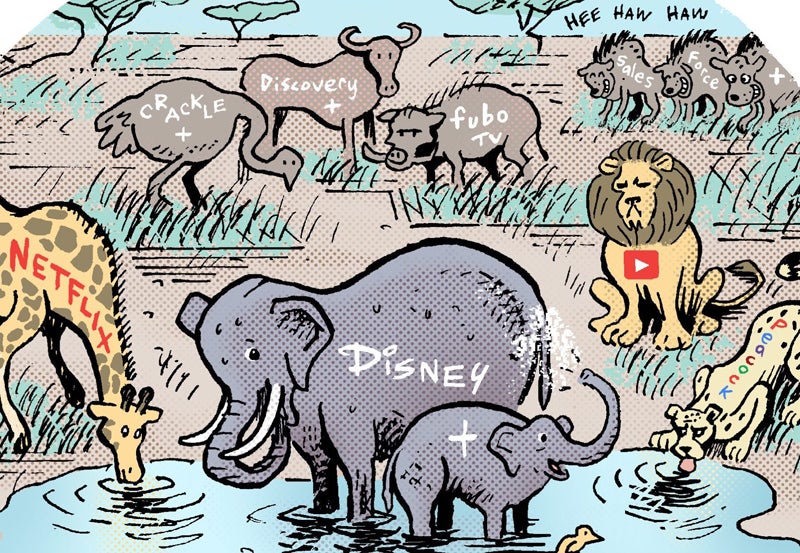Do you know who your customers are? Really? Do you know who your best customers are? What makes them the best? Who are your new customers? What do you need to do to make them profitable and loyal? Are there different ways that your customers prefer to interact with you? Should you deal with certain groups of customers differently?
To answer these questions and many more like them, there are four straightforward methods you can use:
– Customer life-cycle analysis.
– Descriptive customer segmentation.
– Customer interaction analysis.
– Customer profitability/lifetime value analysis.
Customer Life-cycle Analysis
The customer life cycle is a view of how prospects become loyal customers over time. Such analysis can help remove barriers that prevent migration toward loyalty. Specific hurdles that customers face varies from stage to stage of the cycle but can almost always be classified as perception, product or process issues (see Fig. 1).
Start the analysis by assuming what the stages of the customer life cycle should be for your organization. These elements can and should be customized. Focus on the natural steps that customers take on their way to becoming loyal to your company. Then consider the things that prevent them from moving through the cycle.
Next, determine what the business rules are in order to map customers to their position in the life cycle. An example of how a typical e-tailer sees the life cycle is shown in Fig. 2.
Start simple. There will be plenty of opportunities to make this more sophisticated later. The key is to learn something and put it to good use as quickly as possible. Prove the value of the analysis and then continue.
With the life cycle stages identified, you can track conversion rates from one part of the life cycle to the next. You can identify spots where conversion or attrition rates are unacceptable. You will be able to see segments that are unusually well-served or neglected.
With that information, you’ll be able to identify places where customers are likely experiencing some significant difficulties.
Follow that effort up with a little legwork and you should be able to make some educated guesses about what the specific issues are and take the necessary steps to address them.
Descriptive Segmentation
Descriptive customer segmentation is simple, but it’s the right place to start. Behavioral and needs-based segmentation also can be very powerful, but both require the foundation of a descriptive segmentation to be most effective.
Begin with some brainstorming. Are there groups of customers that you tend to serve or think of differently? Small businesses vs. large businesses? One industry vs. another? The ages of certain individuals? Location? Income level? Think about all the demographics you have ready access to.
Then determine the number of customers in each segment. If one segment is much larger than the others, for example, you may want to divide it for better understanding. Your organization is likely structured in a way to focus on some of these segments. Customers may be served by different channels or may purchase different products and services.
With an initial cut for your descriptive segments, map the membership of these segments back to the customer life-cycle stages. Are there certain segments that seem to be having unusual difficulty moving from one life-cycle stage to the next? Here’s another opportunity to apply your knowledge. What marketing program or companywide initiative could be organized to increase the conversion rate for one important segment of customers?
Armed with this information, do something about it now!
Eventually you may want to create multiple versions of the life cycle for different customer segments, as the ideal life cycle for customers may vary.
Customer Interaction Analysis
Interaction analysis is all about understanding how customers deal with your organization. Do they receive direct mailings? Do they call customer service? Do they have a direct sales rep? Do they use the Web site?
Determine what they key interaction points are and what customer-related activities occur at each of these points. Fig. 3 outlines a hypothetical set of interaction points and the key customer-facing activities that are likely to arise in each.
You may find that the same types of activities can (and should) happen at multiple interaction points. Are they aligned? Do they feel consistent to the customer? This is one of the great challenges of becoming customer driven – ensuring that customer interactions consistently create value, not confusion.
How does this potential confusion influence their movement through the customer life cycle?
Although you may need more data than you have right now, if possible map how each customer segment interacts with you – the points at which consumers perform specific activities. If you don’t have the data, make some educated guesses; involve people from each of the key customer-facing functions in the discussions. Use the information to improve coordination between customer service and sales, between the Web and offline marketing, and so on. Focus your efforts on eliminating those process, product and perception issues.
Profitability/LTV Analysis
The key to customer profitability analysis, as in all other similar studies, is to keep it simple (at least initially). Much has been written about lifetime value and accurate measures of current and potential LTV can get complex.
Start by looking at cumulative revenue less cost of goods sold per customer. Take some immediate action – ensure your most profitable customers do not attrit.
Take a look at customer profitability by segment and life-cycle stage:
– Are profitability levels similar or do they vary widely?
– Are there groups of customers that haven’t been profitable historically?
If profitability by stage is somewhat consistent, you will be able to determine the likely benefit of moving a customer from one life cycle stage to the next and the cost of possibly losing a customer.
Once you’ve considered historical profitability, it’s time to start predicting how well these customers will perform in the future. Take into account purchase rates, predicted revenue, attrition rates and a discount rate. This is the beginning of lifetime value analysis.
Map the findings from your LTV analysis onto the segments and stages once again. Identify inconsistencies, seek to understand them and take action.
Points to Remember
These four analytical methods can serve as building blocks for customer understanding and will support effective action. Once you’ve mastered them, there are many other customer evaluation techniques to consider. But remember, don’t get ahead of yourself. Any analysis is only as good as your ability to take action.
So:
– Keep your analysis simple.
– Use the data you have.
– Apply your findings immediately.
– Identify inconsistencies and seek to understand and resolve them.
– Identify inconsistencies and seek to understand and resolve them.



